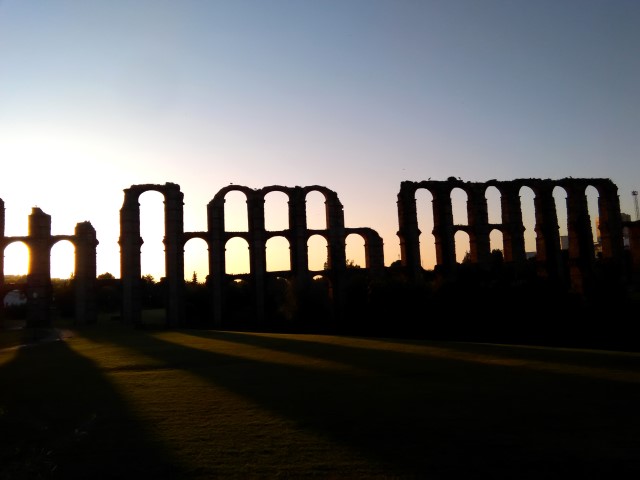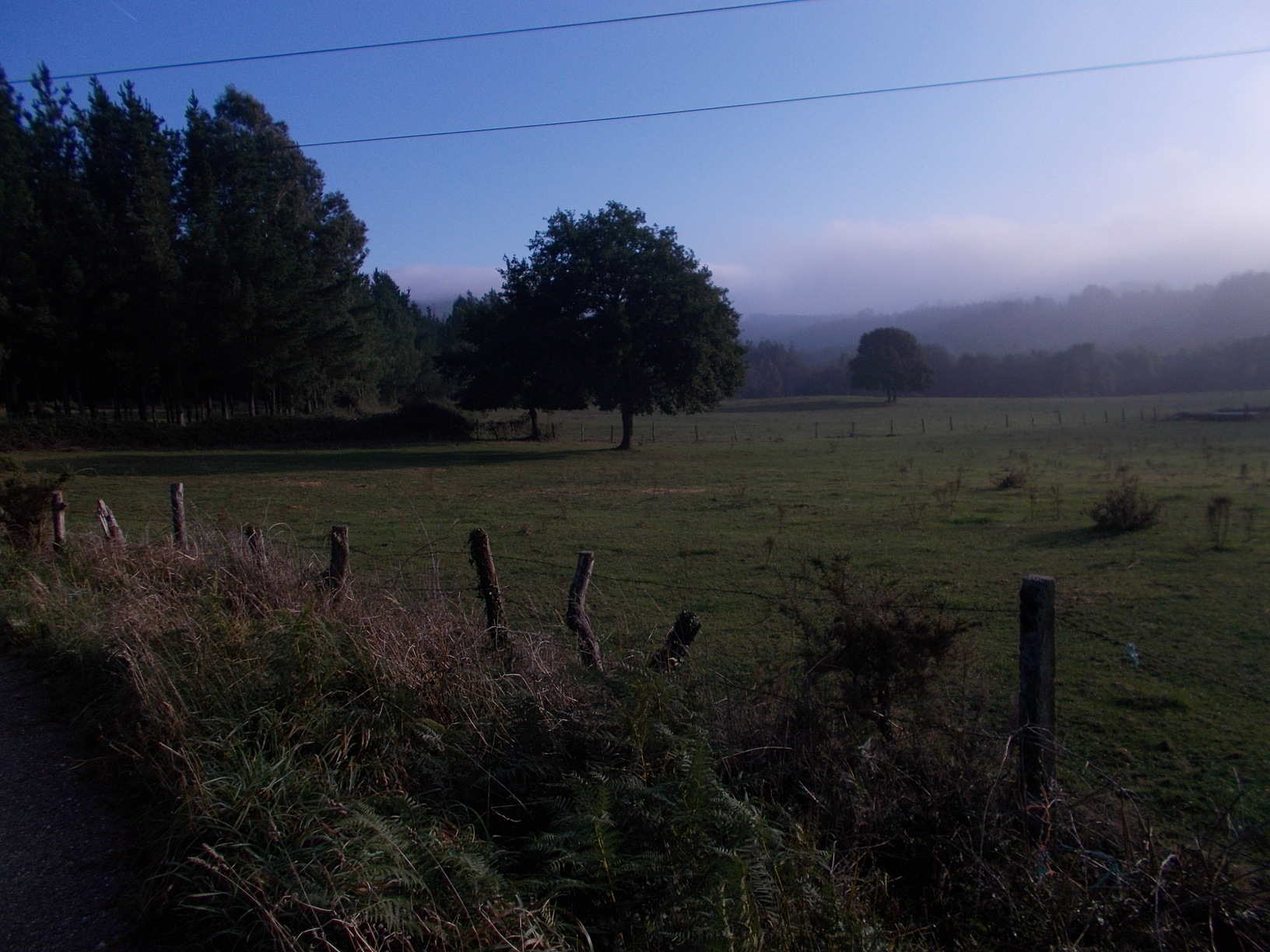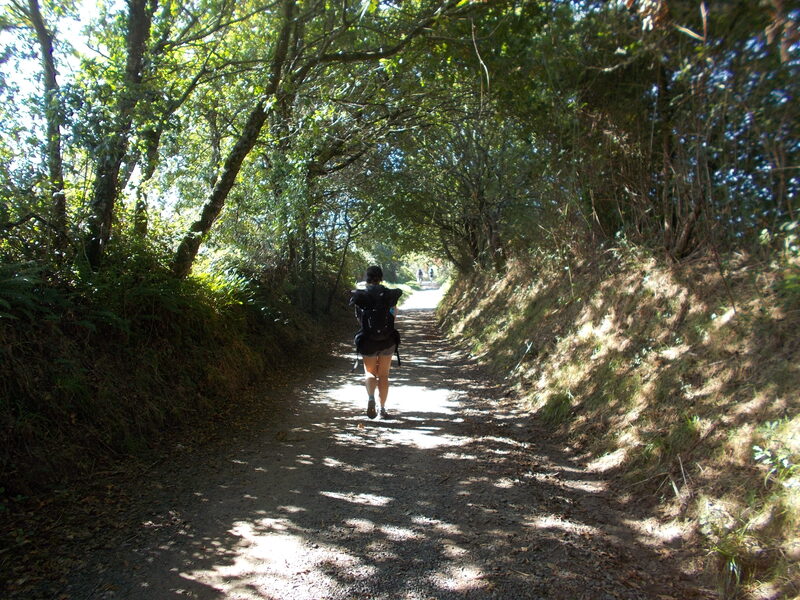The one thousand kilometers long Camino, traversing Spain from south to north, all the way from Seville to Santiago de Compostela, is a common favorite amongst the ranks of experienced pilgrims. The way has a lot of to offer, for both nature and history lovers, not to say for pilgrims who walk the camino from religious or spiritual reasons. Cities like Merida, Caceres, Salamanca or Seville itself offer a unique look into different epochs of the past, starting with Roman empire and ending with 20th century.
Via de la Plata isn’t as commercialized as Camino Frances, or as touristic as Camino del Norte. But it has a very solid infrastructure, with pilgrim hostels relatively evenly spread out all the way, and it isn’t one of those mountainous caminos you can hardly walk without a tent :). I would say it sits somewhere in the middle, between extremely popular Caminos with a bar on every kilometer, and “wild” Caminos that have been marked only recently (such as Olvidado), or Caminos that are almost unknown to foreigners (such as Mozarabe or Lebaniego). This makes it very special, because while you can almost feel like an ancient pilgrim on many patches of the way, you also enjoy some comforts of a modern-day pilgrimage when your day ends (comfy bed to sleep on, hot shower to wash the dust from your hair, other pilgrims you can share your experience with, and so on).
To sum up this introduction, I definitely encourage to you to walk Via de la Plata! I’ve done that on couple of occasions, and though I haven’t reached Santiago on any of those–it wasn’t meant to be, I have just the best memories on this way. In this article I will try to explain what’s the best season to walk Via de la Plata, and what what you should count with when embarking on your journey in different seasons.

– You will see lot of historical sights on Via de La Plata, some of them are older than 1,000 years. Caceres, Salamnaca, Merida… their old quarters belong to cultural heritage of UNESCO for a good reason :).
Table of Contents
Most Caminos have one main season, Via de la Plata has two main seasons
Via de la Plata passes through some of the warmest regions of Spain. Especially Extremadura (the name meaning extremely tough), where it is not uncommon to see temperatures approaching 45 degrees Celsius in shade, during the summer months.
As you can imagine, it is close to impossible walking in such weather, even if one walks in a shade, but you won’t find much shade following the Via de la Plata in this Spanish province. Sure, you always have a handful of pilgrims who start this camino in summer, but they rarely finish it, due to exhaustion from the heat. Exception just proves the rule.
Hence two main seasons on Via de la Plata are spring and autumn, from March to May and from late September to November. Let me elaborate on specifics of these two seasons, and what they have to offer to the pilgrim.
Via de la Plata in April-May: walking with the spring
If you like flowers, scents in the wind, new beginnings, and falling in love (even if it is just platonic love :)), early to mid April is your best bet to start walking from Seville. Walking from south to north, you will find yourself walking with the spring. Flowers bloom in Andalusia before they start blooming in Extremadura and so on. I simplify things a bit here of course, but when you start in April you will enjoy the “spring feeling” all the way to Santiago. And that’s something no other camino in Spain can offer!
All pilgrim hostels are open in April and May, and you won’t meet crowds on this Camino. Hence you won’t find it hard getting accommodation, even if you make no reservations and simply walk from one place to another, hoping for the best, not caring much about what tomorrow will bring. In my opinion, it is a much better camino than always having to think about next three stages and booking your places in advance, just to make sure you won’t end up without a bed…

– Andalusia, Via de la Plata, April 2017. Everything seems all-right when sun shines, trees are green, and flowers bloom. You’ll enjoy such sights when you embark on your pilgrimage from Seville in April.
Via de la Plata in October-November-walking from summer to winter
Staring your pilgrimage in late September or in October offers a different experience. Weather is still incredibly pleasant in Andalusia and good in Extremadura at this time of a year, with temperatures easily attacking 22-24 degrees Celsius, and the sun still pleasantly warm. Days are still long, it very rarely rains in either of these two provinces. If you come from the US or North of Europe, you can prolong your summer on Via de la Plata, experiencing temperatures that aren’t common in your region this time of a year.
As you walk further north, however, into Castille & Leon and especially Galicia, weather becomes less pleasant, and rain more frequent. October and November are historically the rainiest months of the year in Galicia. Locals say that it always rains in Galicia, hence you can imagine how much precipitation falls down in the rainiest months of the entire year :). Having said that, you’ll walk just a bit more than 200 kilometers in rainy Galicia, so the weather doesn’t have to discourage you from walking Via de la Plata in autumn. Or you can walk just the first half, ending in Salamanca, and return to finish your walk in June-July next year, when the weather is generally much better in Galicia.
Walking via de la Plata in summer, low season
If you seek solitude, and perhaps even a physical challenge (we can hardly grow spiritually while staying within the confines of our comfort zone), you can consider walking Via de la Plata in the heat of summer, or the cold of winter. Let’s have a look at both options.
Walking in summer, you will still find most of the albergues open, though some places close down from June to September, simply because there aren’t many pilgrims around, and they do not find it economical keeping the albergues open. But life goes on in these provinces, though opening hours of many places change. It isn’t uncommon to see restaurants opening at 10pm in Extremadura, simply because it is too hot to eat for anyone before the temperature drops to 30 degrees Celsius at most.
Walking in summer, you should start your walks really early, like five o’clock or six o’clock the latest, to make sure you cover the majority of your walk before the heat gets unbearable. You won’t meet many people walking Via de la Plata in summer, but the nature is still there, so are all the historical cities, so is the spirit of the pilgrimage. Via de la Plata is a hard camino at any time of the year, but it is a real challenge walking it during the heat of the summer. If physical challenge and solitude is what you are looking for, however, you can give it a shot :).

– Early mornings are incredibly beautiful on Via de la Plata, even in the heat of the summer. Two hours later though, it will be almost unbearable to traverse the desert-like country where one can find no refugee from the sun….
Via de la Plata in winter–out of season
Very few people walk Via de la Plata in winter, for a couple of reasons. First, the weather. It still doesn’t rain much in Andalusia or Extremadura, but it gets pretty cold especially in the night and in the morning, with temperatures easily dropping below zero degrees Celsius in a “desert-like” countryside of these Spanish provinces. Some people like such weather for walking but most do not :).
Second reason is the lack of services. Even in the main season, you’ll have relatively long patches of no water/food availability on Via de la Plata, the longest one stretching over 30 kilometers (which is something unheard of on any other popular pilgrimage route in Spain). Such stretches become more frequent in winter, simply because the places are not open. This doesn’t mean that you cannot do it, but you’ll have to carry more food and water with you. Count winter clothes and equipment to the mix, and you can forget about the 5-8 kilo backpack you’d walk this way with in spring or autumn.
Many albergues are also closed, and some of the places that are open lack heating. This isn’t a problem most of the year, but with temperatures dropping below zero in winter, you may find yourself freezing, unless you carry a good sleeping bag (which again adds extra weight to your already heavy backpack)… Anyway, Via de la Plata has a special landscape, and it has its beauty in winter as well. If you do not mind planning, and carrying a heavier backpack, and you perhaps seek a solitude for contemplation on your Camino, and cannot walk any other time of a year, you can start in winter…
Final thoughts
Something like a best month or season to walk this or that camino does not exist. It all depends on your preferences, and what you are seeking on your way. If I have to pick one season of the year to walk Via de la Plata, however, I choose spring, starting from Seville early to mid April. Other seasons also have their beauty though, and I hope that my article helped you to decide when to embark on your pilgrimage. Buen Camino!
Matej




![Ultralight Packing List for Camino de Santiago [2025 Edition]](https://caminolovers.com/wp-content/uploads/2022/03/altra-shoes-640-x-480.jpg)


